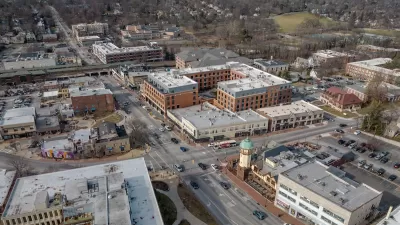In a recent paper, urban theorist Stephen Marshall rehashes Jane Jacobs's criticism of city planning as a pseudoscience built "on a foundation of nonsense." Can science and design be reconciled to provide planning a more stable foundation?
discusses the premise of Marshall's paper, published in Urban Design International, that echoes the 50-year-old critique by Jacobs. "The problem with urban design," says Marshall, "is that its theories are untested, yet accepted as fact. Marshall proposes to overhaul the way that urban design incorporates science into its fabric, calling for more and better urban science, and for the theories to be challenged with alternative hypotheses and rigorously tested."
While some agree, arguing that planners and designers could produce better outcomes by using better models, others such as Peter Laurence, an architect at Clemson University, debate whether the complexity of interactions and behaviors that make up the city could effectively be studied and predicted. "Geoffrey West, a physicist at the Santa Fe Institute who studies urban growth, agrees. People who study cities 'are dealing with maybe one of the most complex systems in the universe,' he says. 'The idea that you could reduce it to an equation is extremely hubristic.'"
"Marshall says that if urban designers don't build themselves a more scientific foundation, then outside researchers will do it for them," adds Fecht. "To survive, the field needs to incorporate scientific training into its educational curricula, and cultivate 'a concern for testing and validation, critical assimilation of scientific findings from disparate sources, and dissemination of the most reliable, up-to-date findings.'"
FULL STORY: Urban Legend: Can City Planning Shed Its Pseudoscientific Stigma?

Alabama: Trump Terminates Settlements for Black Communities Harmed By Raw Sewage
Trump deemed the landmark civil rights agreement “illegal DEI and environmental justice policy.”

Study: Maui’s Plan to Convert Vacation Rentals to Long-Term Housing Could Cause Nearly $1 Billion Economic Loss
The plan would reduce visitor accommodation by 25% resulting in 1,900 jobs lost.

Why Should We Subsidize Public Transportation?
Many public transit agencies face financial stress due to rising costs, declining fare revenue, and declining subsidies. Transit advocates must provide a strong business case for increasing public transit funding.

Paris Bike Boom Leads to Steep Drop in Air Pollution
The French city’s air quality has improved dramatically in the past 20 years, coinciding with a growth in cycling.

Why Housing Costs More to Build in California Than in Texas
Hard costs like labor and materials combined with ‘soft’ costs such as permitting make building in the San Francisco Bay Area almost three times as costly as in Texas cities.

San Diego County Sees a Rise in Urban Coyotes
San Diego County experiences a rise in urban coyotes, as sightings become prevalent throughout its urban neighbourhoods and surrounding areas.
Urban Design for Planners 1: Software Tools
This six-course series explores essential urban design concepts using open source software and equips planners with the tools they need to participate fully in the urban design process.
Planning for Universal Design
Learn the tools for implementing Universal Design in planning regulations.
Smith Gee Studio
Alamo Area Metropolitan Planning Organization
City of Santa Clarita
Institute for Housing and Urban Development Studies (IHS)
City of Grandview
Harvard GSD Executive Education
Toledo-Lucas County Plan Commissions
Salt Lake City
NYU Wagner Graduate School of Public Service





























